If the Bourbon Boom has done anything, it has made “Pappy” a household name. If I get any question when I speak about bourbon, it’s usually “So do you have any Pappy Van Winkle?” “Do you know where I can get some Pappy?” or the more direct “What’s so good about Pappy?”
To answer those questions: Yes, I have a small amount. No, I don’t know where you can get more. And lastly, that’s a complicated question. To really answer it, let’s start with a quick overview of the brand and whiskey itself.
Pappy Van Winkle is a line of bourbons under the corporate umbrella of the Old Rip Van Winkle Distillery Company, which, ironically, doesn’t actually own or operate a distillery. The “Pappy” bourbons are the reserve, or top shelf, line of the brand, as opposed to the “Rip Van Winkle” and “Old Rip Van Winkle” bottlings.
In years past, the Company was also responsible for the Weller branded bourbons. Today, while they use the same mash recipe for all their bourbons and they’re both made in the same distillery, Pappy gets the choice barrels, choice warehouses, and choice aging locations in those warehouses. They also get more time there. The youngest Pappy Van Winkle offering is 15 years old, while the oldest of the Van Winkle or Old Rip Van Winkle lines is 12 years old. Pappy bourbons come in 15 year, 20 year, and 23 year offerings, and have scored historically high in spirits competitions.
Prior to 1991, the bourbons were distilled at the Stitzel-Weller distillery which originally opened in 1935 in the South Louisville neighborhood of Shively. That distillery closed in 1991 and production was moved to the Bernheim Distillery in Louisville (now owned by Heaven Hill). In 2002, the Van Winkle family moved production to the Buffalo Trace Distillery in Frankfort, KY as part of a new joint venture with the spirits giant. This is important, and will factor heavily later in the discussion.
All bourbon must be distilled from a mash that is at least 51% corn. The other 49% (or however much is left if the distiller uses more than 51% corn) usually comes from grains such as Rye and Barley. That recipe, or whatever recipe they use, is called the “Mash Bill.” Most mash bills are 70-80% corn. Corn is really what makes American whiskey unique, and gives bourbon its distinctive flavor. It provides distillers the best bang-for-their-buck in terms of alcohol yield. The younger the alcohol, the more prevalent the corn flavor. As it ages, however, the corn flavor fades and the other grains (called “flavor grains”) in the mash bill become more pronounced.
The second most prevalent grain in Bourbon is usually Rye. Rye is the grain that adds spiciness and peppery flavors to a bourbon. The longer it ages, the more bitter rye can become as it interacts with tannins in the barrel and draws in that charred wood flavor.
Barley is usually the third grain added to a mash, and it adds more texture than anything. It adds a bready fullness to the bourbon, along with flavors of malt, coffee, and chocolate on the back end of the flavor profile.
Some distillers, however, use wheat in their mash. Van Winkle is one of those (Makers Mark being another.) Wheat is an interesting bourbon grain because it adds a softness to the tip of the tongue, and a sweetness to the flavor of bourbon, which is already a naturally sweet whiskey. The Van Winkle line essentially replaces the Rye with Wheat, believing it stands up better to longer time in the barrel. The downside of “wheated” bourbons, in some people’s eyes, is that when young, there can be an acrid hint on the tongue and a thin quality to the liquid as the wheat has not yet had a chance to soften the spirit. That basically means wheated bourbons are excellent for aging, but difficult to properly mass produce in a younger spirit that can be brought to market quickly. So a younger wheated bourbon, like a Makers Mark, is going to allow more of the barley and corn to shine through than a Rye-based bourbon, but an older wheated bourbon will stand up to the tannins a bit differently, producing a sweet, soft bourbon rather than taking on too much of the barrel’s characteristics. At least that’s the theory.
So why Pappy, again? Two reasons: The first is marketing, and many people assume that means they market the bourbon as something better than it is. That’s not really true. The soft flavors garnered the bourbons quite a bit of attention by celebrity chefs, who began to pair it with food and use it in recipes, and the uniqueness of the wheated flavor with long aging made it popular with bourbon drinkers. The resulting buzz was a rush on the limited release of the bottles. It brought attention from the New York Times, Wall Street Journal, Hollywood movies, CNN, and television shows, who all began to use Pappy as the face of the burgeoning American Whiskey and Bourbon industry. It became the poster child for up-scale Bourbon, the United States’ answer to top-shelf foreign liquors. Van Winkle made a great product, and the public ran with it.
But the second reason is what has already been mentioned. It’s unique. It costs a lot of money to bring an aged bourbon to market. The product that is distilled and barreled today has to sit in a warehouse for a minimum of FIFTEEN YEARS to ever reach the shelves of your liquor store as a bottle of Pappy Van Winkle. So there aren’t a ton of companies looking to shell out the money necessary for that without seeing a return for almost two decades. That leaves the Van Winkle company as the sole producer of long-aged wheated bourbons at the moment, because, well, they’ve been doing it the same way forever. In order for another distillery to compete with them, they would have had to have decided 15-23 years ago to do so, and barreled large quantities of wheated bourbon then that they can bottle and sell today.
And that’s also why production isn’t easily ramped up to meet the increased demand. While Van Winkle President Julian Van Winkle assures us that production has increased, no company with any fiscal sense is going to drastically increase production on a 20+ year product, as they simply can’t know what the market for high end bourbon will be in 23 years. The fact that so much of the product evaporates over 20+ years’ time makes it a very expensive and risky business endeavor.
Which brings us back to the move from the Stitzel-Weller Distillery. If you do some simple math, you can determine that since it is 2014, and the S-W distillery closed its doors in 1991, that means that sometime between 2013 and 2015, 100% of the Pappy Van Winkle bottles will have been distilled at the Bernheim facility, with the younger Van Winkle offerings at the Buffalo Trace Distillery. They use the same recipe, but likely are aged in different warehouses today. There are some purists who frantically search for and hoard older bottlings to get that original Stitzel-Weller product, and time alone will tell if the Buffalo trace move will affect the end product. In limited tastings thus far, I can tell no discernable difference between S-W bottlings and Buffalo Trace bottlings.
And Pappy is fantastic bourbon. The best of the lot is the 20 Year Family Reserve. I do not say that lightly, as I generally prefer high proof bourbons, and the 20 year clocks in at 90.4 proof. That’s hardly weak sauce, but it’s also not a cask-strength behemoth. The 20 Year scored a 99 out of 100 at the World Spirits Championship and 99 at the Beverage Tasting Institute, making it the highest rated Bourbon in the world. It is not a product of hype alone.
The 23 Year offering is always a tough subject for me. It’s very expensive, very hard to get, and a very good whiskey. It is 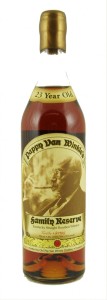 currently bottled at 95.6 proof. While it has often scored very nearly as high as its younger brother in spirits tastings and competitions, I feel like there may be a peak at which this mash bill reaches a zenith, and begins to decline. That peak, for me, is 20 years. The 23 retains a touch too much oak and char flavor to justify the price in my mind. It’s still an excellent bourbon, but I’d rather buy 2-3 bottles of the 20 year than 1 bottle of the 23.
currently bottled at 95.6 proof. While it has often scored very nearly as high as its younger brother in spirits tastings and competitions, I feel like there may be a peak at which this mash bill reaches a zenith, and begins to decline. That peak, for me, is 20 years. The 23 retains a touch too much oak and char flavor to justify the price in my mind. It’s still an excellent bourbon, but I’d rather buy 2-3 bottles of the 20 year than 1 bottle of the 23.
 The 15 year is a bit more stout, at 107 proof, and resembles a more refined version of the 10 year Old Rip Van Winkle, which also clocks in at 107 proof. It’s more powerful than its older siblings, and has a touch more bite, and is an excellent sipper.
The 15 year is a bit more stout, at 107 proof, and resembles a more refined version of the 10 year Old Rip Van Winkle, which also clocks in at 107 proof. It’s more powerful than its older siblings, and has a touch more bite, and is an excellent sipper.
Those three bottles make up the Pappy line. Oftentimes, the other three Van Winkle offerings are 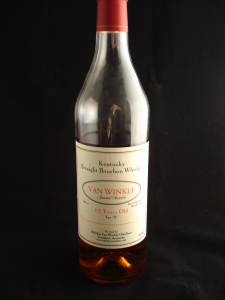 lumped in with the Pappy label. It’s incorrect, but it’s not really a sin to do so, at least for one of them. The Van Winkle 12 Year Special Reserve ‘Lot B’ is a very refined, elegant 90.4 proof bourbon aged 12 years. It isn’t branded as a “Pappy,” but it still retains the characteristics of the pappy line and is a high scorer in competition, and has earned a score of 98 by the Beverage Tasting Institute. So it is generally considered a “Pappy” bourbon, and for all intents and purposes, it is.
lumped in with the Pappy label. It’s incorrect, but it’s not really a sin to do so, at least for one of them. The Van Winkle 12 Year Special Reserve ‘Lot B’ is a very refined, elegant 90.4 proof bourbon aged 12 years. It isn’t branded as a “Pappy,” but it still retains the characteristics of the pappy line and is a high scorer in competition, and has earned a score of 98 by the Beverage Tasting Institute. So it is generally considered a “Pappy” bourbon, and for all intents and purposes, it is.
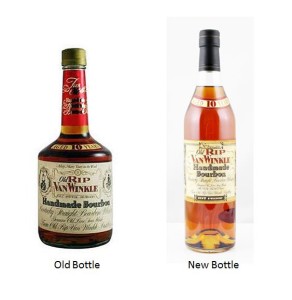 The Old Rip Van Winkle 10 Year was previously considered a bottom-shelf type of bourbon in squat, screw-top bottles. But with the explosion in popularity of the Pappy line, ORVW tagged along for the ride. As buyers couldn’t get the Pappy, they started buying the ORVW, thinking it was similar. Van Winkle wisely took the hint and has recently started packaging the 10 year in bottles very similar to the rest of the line, and the price has risen accordingly. ORVW is a decent bourbon, but at only 10 years, at 107 proof, it’s not a smooth sipping whiskey, and not something I would pay a premium for. It’s a $25 dollar whiskey, in my estimation.
The Old Rip Van Winkle 10 Year was previously considered a bottom-shelf type of bourbon in squat, screw-top bottles. But with the explosion in popularity of the Pappy line, ORVW tagged along for the ride. As buyers couldn’t get the Pappy, they started buying the ORVW, thinking it was similar. Van Winkle wisely took the hint and has recently started packaging the 10 year in bottles very similar to the rest of the line, and the price has risen accordingly. ORVW is a decent bourbon, but at only 10 years, at 107 proof, it’s not a smooth sipping whiskey, and not something I would pay a premium for. It’s a $25 dollar whiskey, in my estimation.
The oft-forgotten stepchild of the Van Winkle Line is not a bourbon at all. It’s the Van Winkle Family Reserve Rye. It’s
bottled at 95.6 proof, and at 13 years is one of the longest aged rye whiskeys available. The rye is prevalent, and some good vanilla and pepper flavors shine through as well. Like the bourbons, the Rye whiskey from Pappy is extremely popular and very difficult to find on shelves.
The popularity and insane buzz around Pappy is the primary reason we at Modern Thirst have not posted a review of any of the Pappy line. We certainly are not immune to trends and excitement in the bourbon industry, and anything short of a blind test wouldn’t do it justice. And raving about the product, no matter how well-deserved, has already begun to become a bit of an industry cliché.
When tasting any of the Pappy offerings, including the 12 year RVW, you should really sip them, neat. The 107 proof 15 Year can use a drop or two of distilled water, but don’t drink them over ice and certainly never use them with mixers. They are soft, delicate bourbons that can become pedestrian when mixed with anything strong, or when ice significantly melts while drinking. Their value is in that soft wheated character. Don’t drown it.
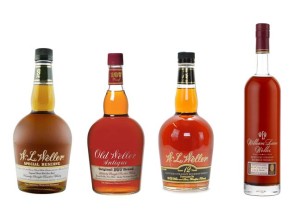 In recent years, with the difficulty many drinkers face in tasting Pappy bourbons, let alone buying bottles for themselves, many drinkers have flocked to the Weller line. The mash bill is the same, and it is aged longer than Maker’s Mark. For lack of many other wheated options, Weller is really one of the only other outlets. The 12 year Weller is not nearly as smooth or refined as even the 12 year RVW, but it’s a very nice sip with aged wheated character. The younger Wellers are fine bourbons, but don’t expect them to closely resemble Pappy. Aging is as important to bourbon as mash bill.
In recent years, with the difficulty many drinkers face in tasting Pappy bourbons, let alone buying bottles for themselves, many drinkers have flocked to the Weller line. The mash bill is the same, and it is aged longer than Maker’s Mark. For lack of many other wheated options, Weller is really one of the only other outlets. The 12 year Weller is not nearly as smooth or refined as even the 12 year RVW, but it’s a very nice sip with aged wheated character. The younger Wellers are fine bourbons, but don’t expect them to closely resemble Pappy. Aging is as important to bourbon as mash bill.
Weller can be found in 3 varieties. W. L. Weller Special Reserve is a 7 year old, 90 proof wheated bourbon that can be found well under $20. Old Weller Antique is another 7 year wheated bourbon, but is bottled at 107 proof. Both are a little rough around the edges. The best of the three is the W.L. Weller 12 Year, which is the smoothest and most refined of these spirits at 90 proof. It’s still a far cry from the pleasures of sipping Pappy. A fourth version can sometimes be found when Buffalo Trace releases their Antique Collection, though these bourbons are becoming as hard to find as Pappy. One of the four offerings in this line as the William Larue Weller, which is an outstanding wheated bourbon that is aged between 10 and 14 years, and is bottled at barrel proof. It will also set you back a good $150 if you can find it
 Heaven Hill has also entered one foot into the wheat fray with Bernheim Wheated Whiskey. While the product is unique, Heaven Hill’s entrance to the market should not be a surprise, as their Bernheim Distillery has been producing Wheated Bourbons for other brands for quite some time (including Pappy in the 1990s). An around $30 bottle, the Bernheim Wheat is at least 51% wheated mash bill, which separates it from the bourbon crowd. It is aged only 7 years in the barrels, however, so don’t expect it to rival long-aged wheated bourbons.
Heaven Hill has also entered one foot into the wheat fray with Bernheim Wheated Whiskey. While the product is unique, Heaven Hill’s entrance to the market should not be a surprise, as their Bernheim Distillery has been producing Wheated Bourbons for other brands for quite some time (including Pappy in the 1990s). An around $30 bottle, the Bernheim Wheat is at least 51% wheated mash bill, which separates it from the bourbon crowd. It is aged only 7 years in the barrels, however, so don’t expect it to rival long-aged wheated bourbons.
In 2014, Heaven Hill also released the 8th Edition of Parker’s Heritage Collection, which was a 13 year old barrel-proof bottling of the Bernheim distillate. It was excellent, but extremely difficult to find on shelves, as it was a limited release.
So, unfortunately, there isn’t really a viable solution for those who crave a taste of Pappy but can’t find a bottle themselves, and don’t want to pay extortion-like prices at a bar for one glass. You can try to get a hint of the characteristics from Weller, Makers Mark, and other offerings, but they’re simply not the same.
But the bourbon boom doesn’t appear to be subsiding, so there are countless other flavor profiles and limited release bourbons to sample, buy and collect. Don’t limit yourself. If you get the chance to try some Pappy, enjoy it! And make sure you send us a note with your impressions or leave comments on this article! We will gladly post reader feedback on the site.
Cheers!

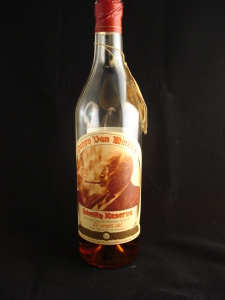


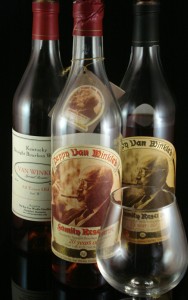
1 Comment
Pingback: Wheat Whiskey and Bourbon Rundown | ModernThirst